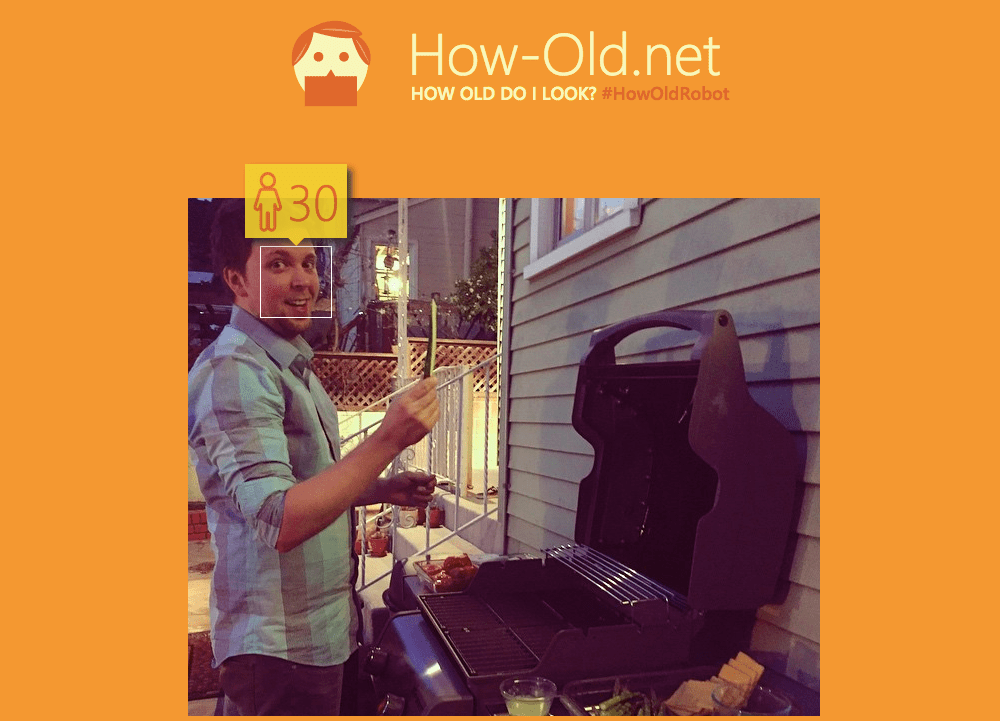
How old do you look? Old for your years? Young enough that you get carded every time you try to buy a beer?
Now, how old do you look… to a computer that does nothing but guess ages?
As something of an experiment, Microsoft’s machine-learning team has built a site that takes any photo you throw at it and tries (with varying success) to guess the ages of those it portrays. They say they put it up in hopes of “perhaps 50 users” trying it out; within hours, it was getting hammered by tens of thousands of people.
After a quick demonstration today at the BUILD conference, it’s popular enough that they’re having trouble keeping the servers up.
You can upload any photo under 3 MB, which has people trying out all sorts of silly stuff. How old does your dog look? Or that weird stain on your wall that kind of looks like a face? 37? Okay!
Give it a few well-lit photos, and it’ll generally get your age right within a year or two.
If it gets your age terribly wrong, though, fret not — you’re not alone. On the first pass with a poorly lit photo, it told me I was an 80-year old man. Just yell “YOU DON’T KNOW ME, ROBOT” and close your computer, everything will be okay.
Comments
Post a Comment